Polaris Dawn mission comes to end with SpaceX Dragon landing off Florida coast
- When the Dragon spacecraft launched Tuesday atop a Falcon 9 rocket, the vehicle carried the private astronauts further into space than humans have reached in more than half a century.
- Two days after launching, Isaacman and his crew further made history: Becoming the first nonprofessional astronauts to open the hatch of their vehicle and expose themselves to the vacuum of space.
- While the daring mission has concluded, it's only the first of three spaceflights planned under the larger Polaris Program.
A SpaceX Dragon capsule splashed down off the Florida Coast on Sunday, bringing an end to a historic commercial mission in which four astronauts reached new orbital heights and completed a pioneering spacewalk.
At 3:36 a.m. ET on Sunday, the Dragon and the Polaris Dawn crew safely landed near the coast of the Dry Tortugas in Florida, according to SpaceX.
The water landing came on the sixth day of the Polaris Dawn mission that sent a crew led by billionaire entrepreneur Jared Isaacman on an ambitious spaceflight to help lay the groundwork for future missions deep into the cosmos.
When the Dragon spacecraft launched Tuesday atop a Falcon 9 rocket, the vehicle carried the private astronauts further into space than humans have reached in more than half a century. Two days after launching, Isaacman and his crew further made history: Becoming the first nonprofessional astronauts to open the hatch of their vehicle and expose themselves to the vacuum of space.
"It is with great relief that I welcome you home," SpaceX President and Chief Operating Officer Gwynne Shotwell said in a post on social media site X. "This mission was even more extraordinary than I anticipated."
While the daring mission has concluded, it's only the first of three spaceflights planned under the larger Polaris Program.
SpaceX Dragon splashes down off Florida coast
The Polaris Dawn astronauts landed Sunday in waters off the Florida coast in the same SpaceX Dragon that took them to space five days prior.
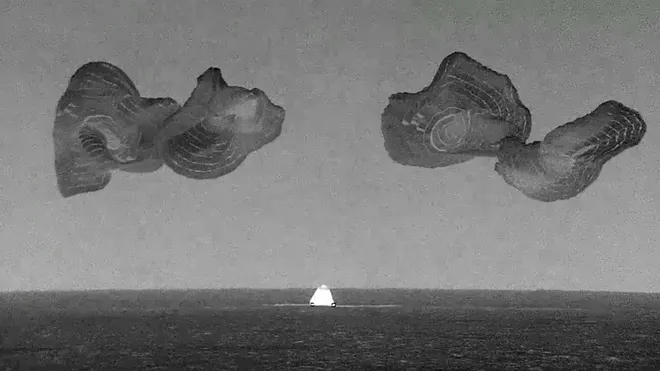
Once it completed a deorbit burn and re-entered Earth's atmosphere, the Dragon cruised over Florida before deploying four parachutes for the water landing in Dry Tortugas, a small island located 70 miles west of Key West in the Gulf of Mexico.
After the predawn landing, a recovery team approached the vehicle to retrieve it and its crew. The capsule was then lifted from the water and onto the recovery vessel.
SpaceX officials took great strides to ensure that the weather forecast looked clear for the crew's return to Earth.
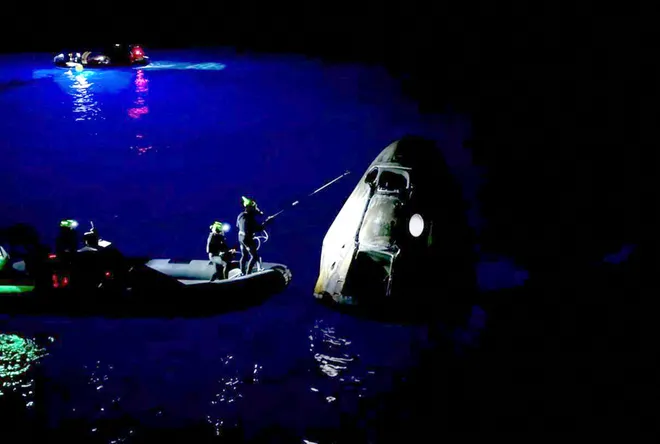
Most crewed space launches send astronauts to dock at the International Space Station, where their return to Earth can safely be delayed and rescheduled as needed, as most recently became the case for the Boeing Starliner astronauts. The space station is well-provisioned, and even uncrewed spacecraft routinely launch on resupply missions.
But in the case of the Polaris Dawn mission, the crew members were entirely reliant on the oxygen and supplies they had stored on the spacecraft, which was only enough for about a week, Isaacman previously explained on social media site X. For that reason, SpaceX waited for several days for weather conditions to improve to ensure the Dragon would have a safe trip back into Earth's atmosphere.
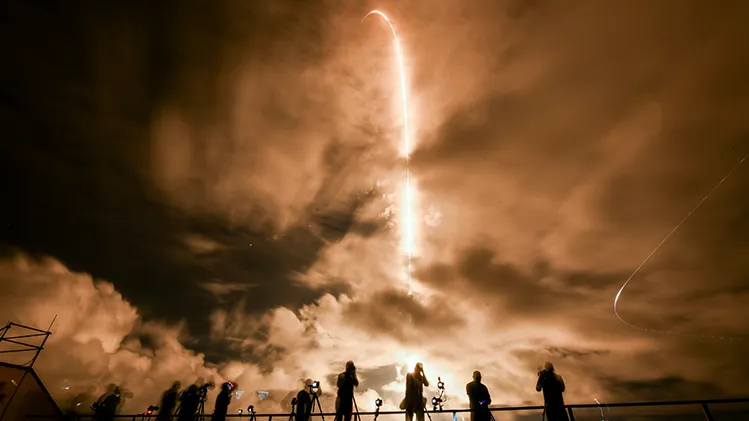
What Polaris Dawn astronauts accomplished
Isaacman, founder of internet company Shift4 Payment, commissioned the mission along with SpaceX and served as mission commander.

Under Isaacman's leadership were pilot Scott “Kidd” Poteet, a retired United States Air Force lieutenant colonel; and SpaceX employees Sarah Gillis and Anna Menon, who served as mission specialists. Menon, who read a children's book she co-authored while on the mission, was also the crew's medical officer.
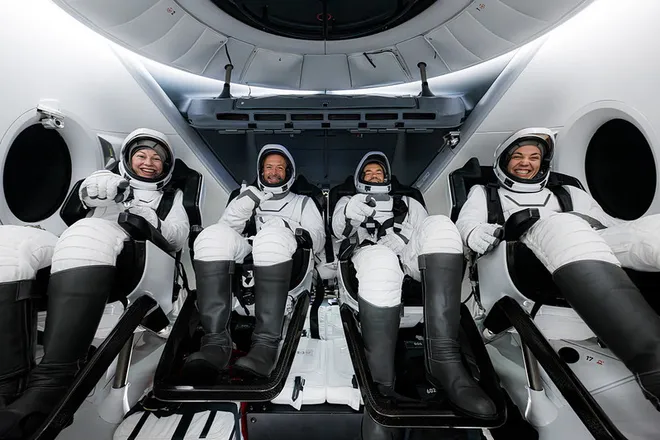
The four astronauts' five days in space represented a new chapter of space exploration as companies like SpaceX increasingly seek to conduct ventures that were once almost exclusively the realm of space agencies like NASA. And Polaris Dawn was a mission that pushed boundaries beginning on day one.
The launch sent the spacecraft ascending to 870 miles above Earth's surface, a height higher than any crewed vehicle has traveled since NASA's Apollo era came to an end in the 1970s. For Menon and Gillis, they are now not only the the first SpaceX employees to travel to space, but have traveled higher than any other women in history.
The Dragon then reached a cruising altitude of 435 miles above Earth while the astronauts prepped for the next milestone: a historic spacewalk.
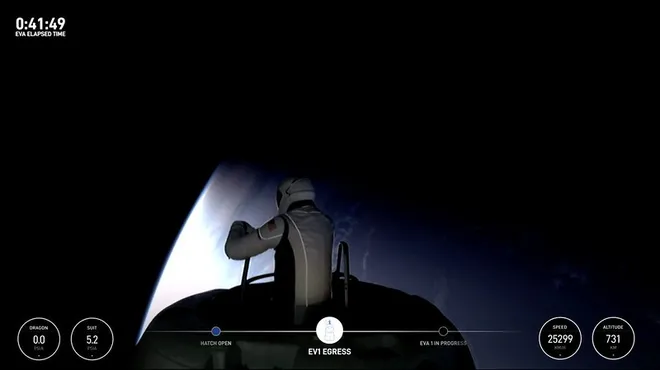
On Thursday, Isaacman and Gillis exited the Dragon capsule to take in the endless black expanse of outer space. But because all four crewmembers were exposed to the vacuum of space, they are all considered to be part of the first-ever spacewalk conducted by anyone other than government astronauts.
The spacewalk was intended to test the capabilities and mobility of SpaceX's new suits, which the company designed to protect astronauts against radiation and extreme temperatures.
Along the journey, the crew tested a new laser-based satellite communication system using Starlink. They also conducted nearly 40 scientific experiments – many of which aim to understand the human body's reaction to long spaceflights as NASA and other space agencies set their sights on destinations like Mars.
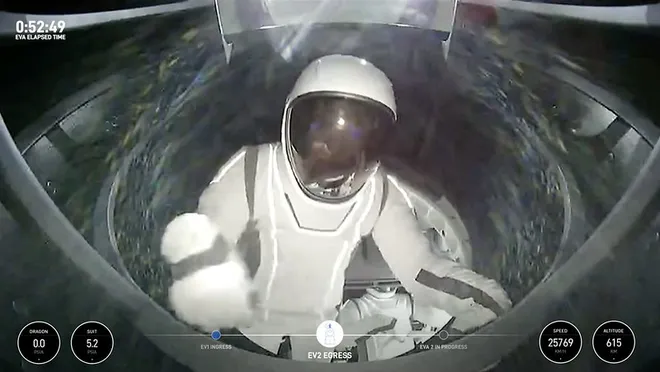
Polaris Dawn:Crew members become 1st private astronauts to complete spacewalk
What's next for the Polaris Program
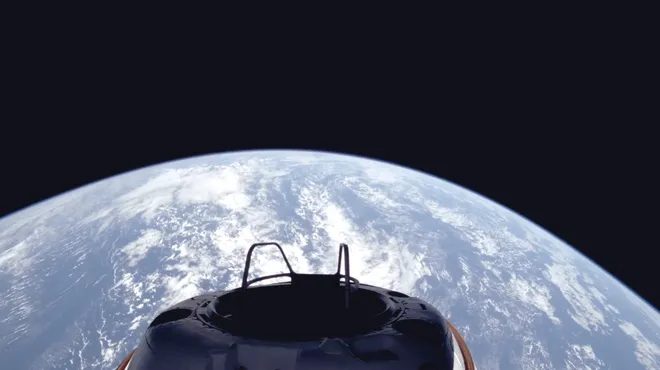
The first of three missions under the Polaris Program, the venture was to test technology that could one day make SpaceX founder Elon Musk's vision of crewed trips to Mars a reality.
The second mission "will continue to expand the boundaries of future human spaceflight missions, in-space communications, and scientific research," according to the program's website. Additional details, including a launch date, have not yet been announced.
When the day comes that the third and final Polaris Program mission launches, it's intended to be the first human spaceflight on the SpaceX Starship rocket. The gargantuan rocket, which has so far only undergone uncrewed tests, will one day ferry NASA astronauts from lunar orbit to the moon's surface as part of the space agency's Artemis program.
In its fourth and most recent test in June, the Starship managed to once again make it to orbit before splashing down for its first successful landing in the Indian Ocean.
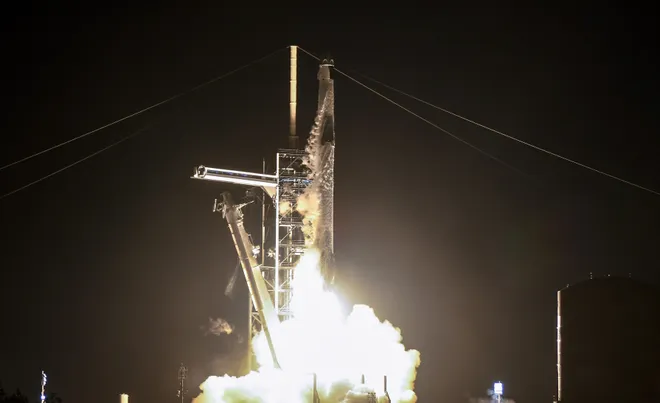
Musk also recently unveiled his vision of Starship crafts taking humans to Mars in four years following his plan for an uncrewed venture to the Red Planet in 2026.
But before Musk's dream of crewed missions to Mars can happen, his company will first have to ready Starship to take astronauts from lunar orbit down to the moon as early as 2026.
NASA is paying SpaceX a hefty $2.9 billion sum to develop the megarocket – lauded as the biggest and most powerful rocket ever built – for the space agency's ambitious Artemis lunar campaign. When Artemis III astronauts head back to the moon in the years ahead for the first time since the Apollo era came to an end in the 1970s, SpaceX's Starship would need to be able to transfer them from NASA's Orion capsule while in lunar orbit before heading down to the surface.
Eric Lagatta covers breaking and trending news for USA TODAY. Reach him at elagatta@gannett.com
Disclaimer: The copyright of this article belongs to the original author. Reposting this article is solely for the purpose of information dissemination and does not constitute any investment advice. If there is any infringement, please contact us immediately. We will make corrections or deletions as necessary. Thank you.




